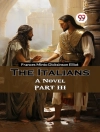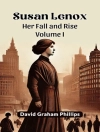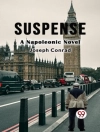In ‘The Light of Scarthey, ‘ Egerton Castle crafts a captivating narrative steeped in atmospheric detail and rich characterizations. Set against the backdrop of the majestic Scarthey Island, the novel intertwines elements of romance, adventure, and the supernatural, reflecting the literary trends of the late 19th century. Castle’s lush prose and vivid descriptions immerse readers in the island’s enigmatic allure, while his nuanced exploration of love and longing adds depth to this beguiling tale. The interplay of light and shadow serves as a poignant metaphor for the emotional journeys of the characters, enhancing the thematic resonance of the work. Egerton Castle was not only an accomplished novelist but also an influential playwright and biographer, whose diverse literary pursuits informed his writing. His keen interest in the supernatural and fascination with the complexities of human relationships are evident throughout the story. Drawing from his own experiences in the Victorian social milieu, Castle’s understanding of societal norms shapes the characters and their dilemmas, allowing him to weave a narrative that critiques as much as it entertains. This enchanting novel is highly recommended for readers seeking a blend of romance, mystery, and an exploration of the human condition. Castle’s deft storytelling and evocative imagery make ‘The Light of Scarthey’ a timeless read that lingers in the mind long after the final page is turned.
Over de auteur
Egerton Castle (1858–1920) was an English author and antiquary whose literary contributions are recognized primarily in the genres of romance and historical novels. Castle’s erudition and his passion for history were evident in his carefully crafted narratives, which often incorporated elements of adventure and chivalry. A notable work in his oeuvre is ‘The Light of Scarthey’—a romantic narrative interwoven with suspense and the historical richness characteristic of his literary style. Alongside his solo endeavors, Castle often collaborated with his wife, Agnes, and such partnerships yielded an extensive bibliography of popular works that resonated with the readers of their time. Castle did not merely indulge in fiction; he also had a scholarly inclination, which he expressed through his work on fencing, ‘Schools and Masters of Fence.’ His prose has been described as fluid and his attention to detail reflected a deep respect for historical accuracy. Castle’s influence waned over time, but his works, including ‘The Light of Scarthey’, remain an enduring testimony to his storytelling prowess and his respect for the romanticism of the past, elements that continue to endear him to a niche audience of classic literature enthusiasts.












